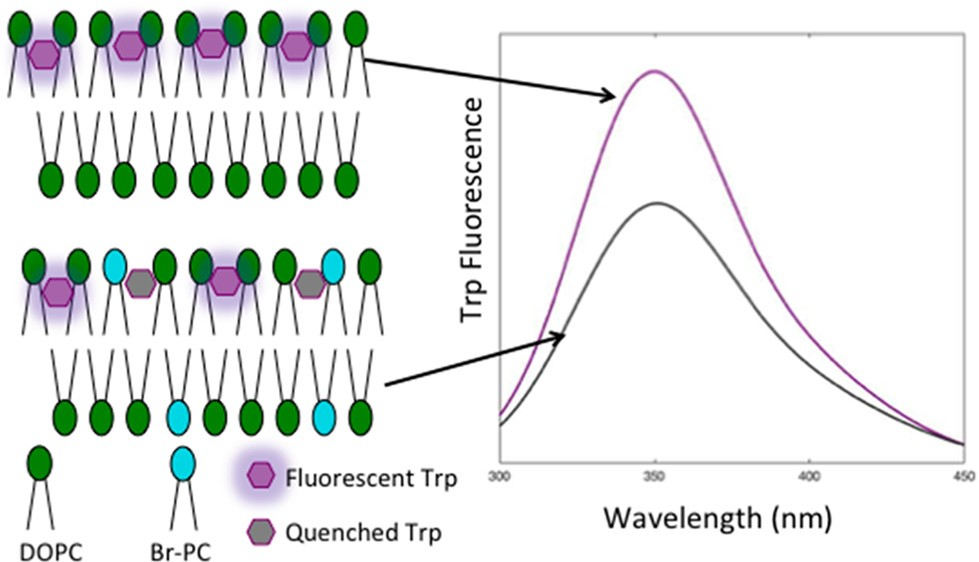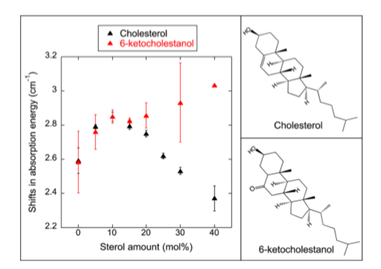Lipid bilayer vesicles
Peptide penetration in lipid bilayer vesicles

By exploring the complex network of electrostatic forces in a dynamic and heterogeneous biological membrane, we aim to better understand the underlying molecular mechanism of membrane structure, dynamics, and function, including vital functions such as unassisted transport of small molecules and peptides across the bilayer. Using a variety of characterization methods including fluorescence spectroscopy, UV-visible spectroscopy, and NMR, we are investigating membranes at a molecular level to investigate the mechanism of membrane permeation.
Sterols in lipid bilayer vesicles bla bla bla bla bla

Lipid bilayer membranes control critical elements of biological function through structural and electrostatic mechanisms. The structure of the lipid bilayer depends on numerous factors such as the chemical identity of lipids, the intercalation of small molecules such as sterols into the bilayer, and phase separation of lipid and protein-lipid domains. This creates a complex electrostatic environment that has important consequences for interactions between the membrane and proteins associated with it. In our laboratory, we have applied vibrational Stark effect (VSE) spectroscopy, coupled with molecular dynamics simulations from collaborators, to directly measure the magnitude and direction of an electric field within the membrane interior. For example, we have successfully incorporated cholesterol and 6-ketocholestanol (6-kc) into a phospholipid bilayer and demonstrated that the presence of an extra ketone group on 6-kc causes distinct membrane fluidity and electrostatic profiles within the membrane.
